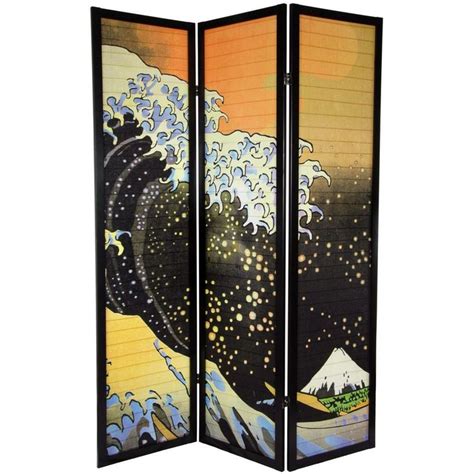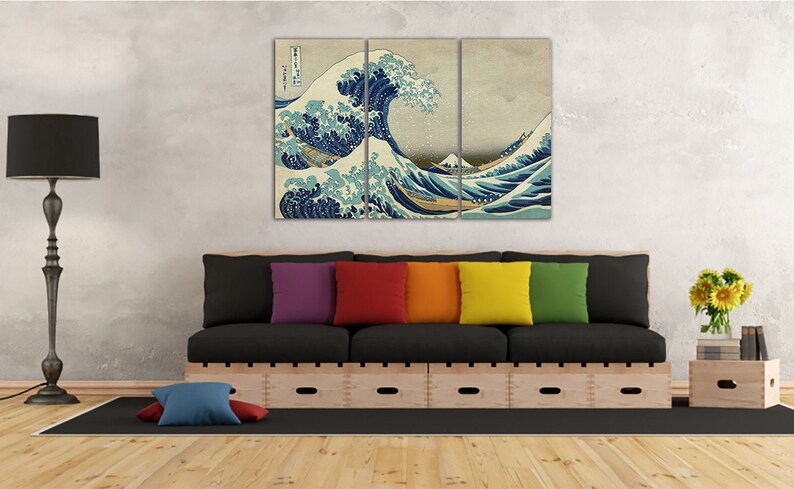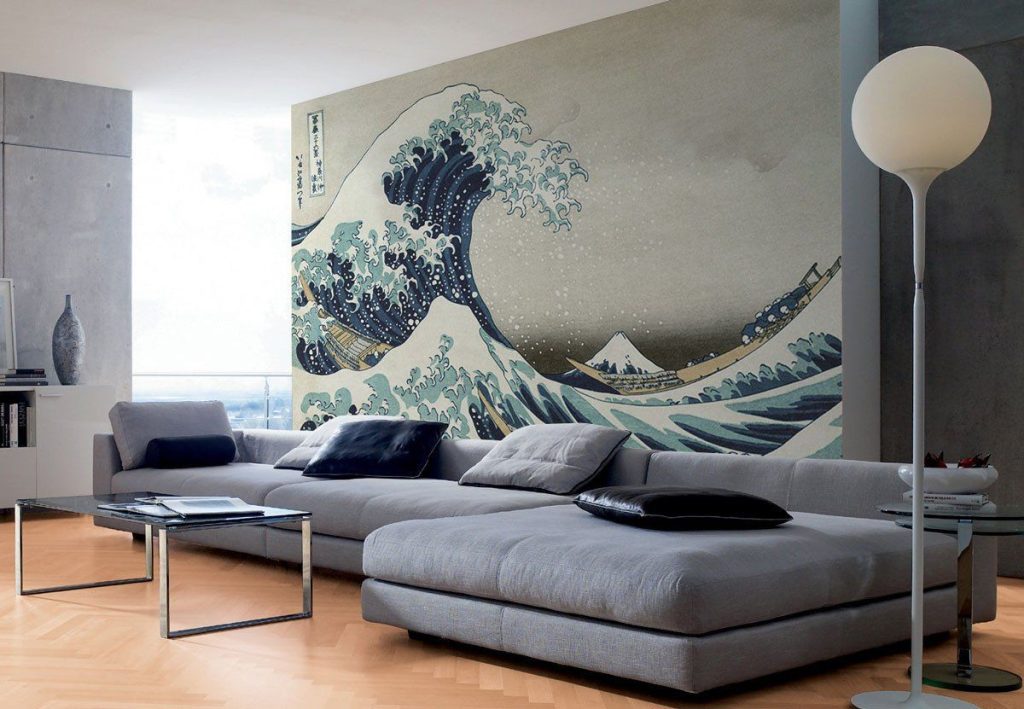
The Great Wave of Hokusai: A Timeless Influence on Japanese Design
The Great Wave of Hokusai, also known as “Kanagawa-oki Nami-ura,” is a woodblock print created by the Japanese artist Hokusai in the early 19th century. The iconic image depicts a large wave off the coast of Japan, with Mount Fuji visible in the background. The Great Wave has become one of the most recognizable pieces of Japanese art, and its influence on Japanese design can be seen in various forms, including Japanese interior design.

The Great Wave as a Cultural Symbol
The Great Wave of Hokusai is not only a beautiful work of art but also a cultural symbol that represents the power and beauty of nature and the fragility of human life. The image has become synonymous with Japan and is often used to represent the country in various forms of media. The Great Wave has also been used as a symbol of resilience and perseverance, representing the ability to weather even the most powerful storms.
The Great Wave’s depiction of the sea and the wave, as well as Mount Fuji in the background, evokes a sense of the sublime and the awe-inspiring nature. It is a reminder of the vastness and the beauty of the natural world, and the smallness and vulnerability of humanity in comparison. The image has become a symbol of Japan’s relationship with nature and its ability to coexist with it.
The Great Wave’s influence can be seen in various forms of Japanese culture, including literature, music, and film. The image has been referenced in many songs, books, and movies as a symbol of Japan’s natural beauty and cultural heritage. It has also been used as a symbol of hope and resilience in times of adversity. The Great Wave has become a symbol of Japan’s cultural identity and a source of national pride.


“The Great Wave of Hokusai has had a significant influence on Japanese Interior Design, with its minimalist design, natural materials and emphasis on simplicity.


Influence on Japanese Interior
In addition to its cultural significance, The Great Wave has also had a significant influence on Japanese Interior Design. The painting’s use of bold lines and simplicity of form is reflected in the minimalist design of traditional Japanese homes. The use of natural materials such as wood, bamboo, and stone is also inspired by the image’s depiction of nature. The Great Wave’s influence can also be seen in the use of water elements in traditional Japanese gardens, where the movement of water is used to create a sense of calm and tranquility. The emphasis on simplicity and the use of natural elements in Japanese interior design is a reflection of the values and aesthetic principles represented in the Great Wave of Hokusai.
The Great Wave of Hokusai is not just a beautiful work of art, but it is also a cultural symbol that continues to inspire and influence Japanese design. Its representation of the power and beauty of nature and the fragility of human life, as well as its influence in the traditional design of Japanese interiors, makes it a timeless piece of art that continues to be relevant and inspiring.
The Great Wave’s Legacy
The Great Wave of Hokusai continues to be a source of inspiration for artists and designers around the world. The image’s simple yet powerful form has made it a timeless piece of art that continues to influence Japanese design. The Great Wave’s legacy can also be seen in the popularity of Japanese art and culture, which has been on the rise in recent years. The image’s enduring popularity is a testament to its ability to connect with people on a deep and emotional level.


The Great Wave of Hokusai is a powerful image that has had a significant influence on Japanese design. Its ability to depict the beauty of nature and the fragility of human life has made it a cultural symbol. The image’s influence can be seen in various forms of Japanese design, including interior design. The Great Wave’s legacy continues to inspire artists and designers around the world and its popularity is a testament to its timeless appeal.
